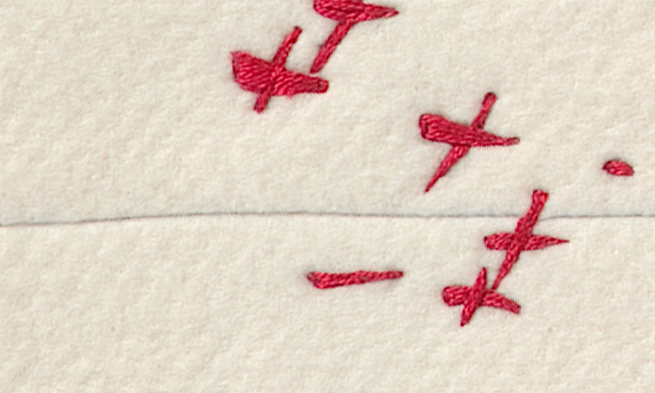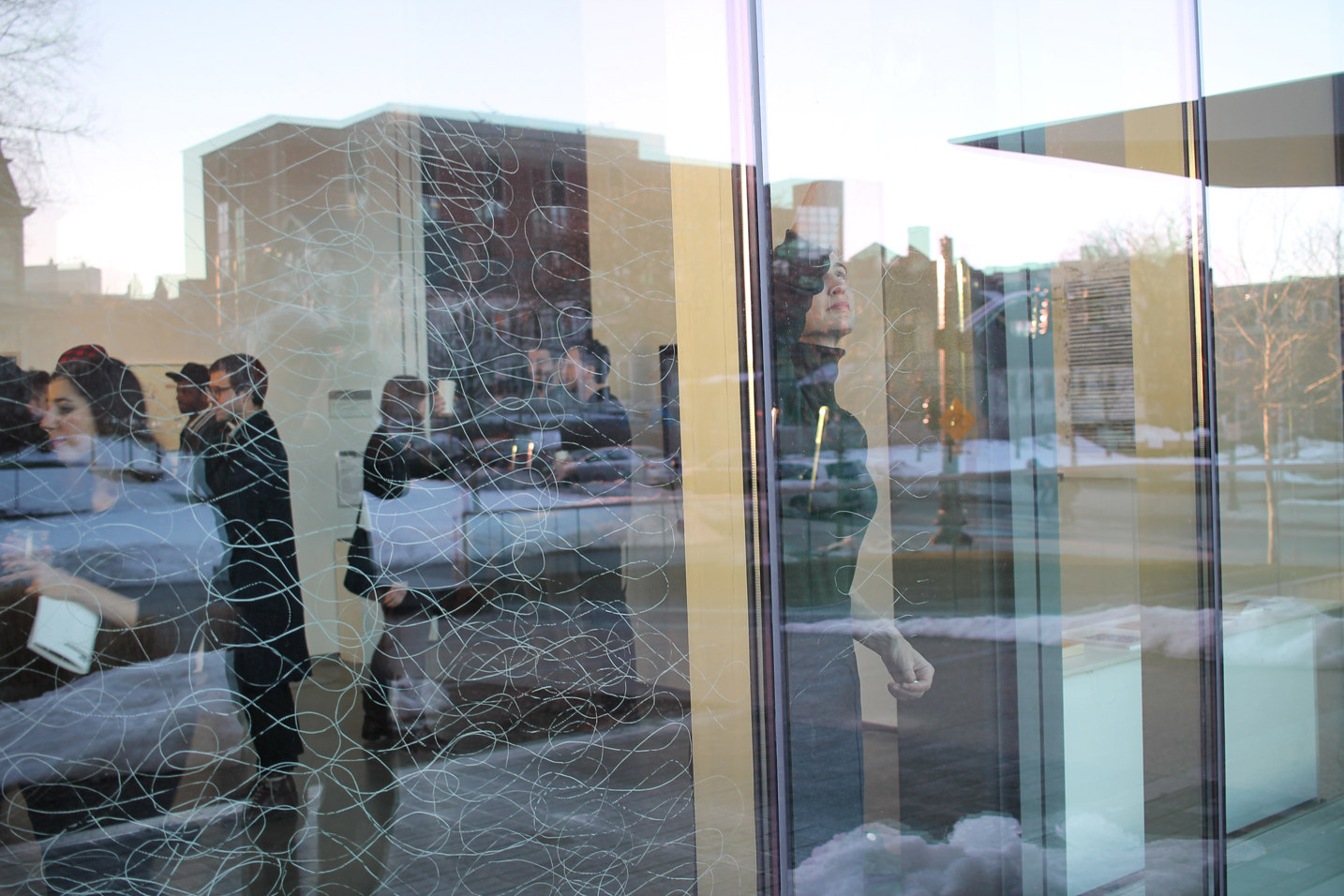The Union of Text & Textiles: Jen Bervin
The Union of Text & Textiles
School of Art Design and Art History
The Union of Text & Textiles:
Layering Research, Collaboration, and Art
Lecture by Jen Bervin
March 1st, 7:00PM
Duke Hall Gallery
Visual artist and poet Jen Bervin will present "The Union of Text and Textiles: Layering Research, Collaboration, and Art" this Tuesday, March 1st at 7:00 PM in the Duke Hall Gallery of Fine Art.
Jen Bervin, perhaps best known for her acclaimed co-curated book The Gorgeous Nothings: Emily Dickinson's Envelope Poems, will give a multimedia presentation on four recent projects that combine poetry and textiles. Those works include:
The Dickinson Composites, a series of large-scale embroideries that depict the poet Emily Dickinson’s variant marks in her manuscripts. Between approximately 1858 and 1864, Dickinson grouped her handwritten poems composed on stationery folios into forty packets—later called fascicles—stab-bound with red and white twist thread. In the fascicles, Dickinson’s first experiments with the variants—the + signs that direct readers to other possible words or phrases in her poetry manuscripts—surface and grow into a complex system she uses throughout her life. These works are based on layered composites Bervin made of Dickinson’s marks on the recto and verso in six fascicles, respectively: 16, 19, 28, 34, 38, and 40.
Despite their obvious presence in the manuscripts, the variant marks and words, so integral to Dickinson’s poetics, are omitted in reading editions, which also override her line breaks. In a New Yorker article about The Gorgeous Nothings and The Dickinson Composites, Rebecca Mead quotes Bervin as saying, "It seemed to me that what she was doing was much more interesting than what was being done to her." Bervin’s works are aligned with mending, restitution, and the deeper gesture that Dickinson’s poems and variant marks make.
Nanoimprinted on silk film and read as a projection with fiber-optic light, Jen Bervin’s The Silk Poems is an experimental work that takes this textile as its subject and form. Silk, as a material, is compatible with body tissues; our immune system accepts it on surfaces as sensitive as the human brain. Exploring the cultural, scientific, and linguistic complexities of silk, mending, and the body, and drawing on contemporary biomedical engineering research at the Tufts University Silk Lab using bioactive silk sensors under human skin, the artist will fabricate what looks like a piece of microfiche film—a single small sheet of imprinted silk film, with every poem present nanoscale.
This project includes consulting nanotechnology and biomedical labs as well as over thirty international textile archives, medical libraries, and sericulture sites in North America, Europe, the Middle East, and Asia. The project is supported by a 2013 Creative Capital Grant in Literature and a 2014 Bogliasco Foundation Fellowship, and will premiere at MASS MoCA in 2016.
In Jen Bervin’s performative drawing Silk Line, she used a white pencil line on a large glass window to draw forms based on the filament pattern the silkworm makes in creating its cocoon. The drawing performance was a part of the exhibition From Line to Constellation at the Cohen Gallery at Brown University curated by Francesca Capone.

Jen Bervin’s project, Su Hui’s Reversible Poem, focuses on one of the earliest recorded poems by a woman—also one of the most complex poems in existence, written in China in the 4th century by Su Hui. Su Hui’s poem, “Xuanji Tu” or “Picture of the Turning Sphere”, was composed as a 29 x 29 character grid, written and embroidered in silk in a color scheme based on celestial charts. Innovative in its reversible form, the poem can be read in any direction to yield 7,000 possible readings. It had an explicit intended reader: Su Hui sent the poem as a letter to her husband who had taken a concubine against her wishes and relocated far away for work. Both brilliant and effective, the poem brought him back, alone.
Working closely with experts in China at the Suzhou Embroidery Research Institute to create double-sided silk embroideries of Su Hui’s poem, Bervin aims to convey the embroiderers’ contemporary experience of reading Su Hui’s poem in textile time. The conversations and interactions around it are the center of the work, which will result in a publication with Christine Burgin and an art installation inspired by highly interactive Chinese museum environments.
Bervin's art has been exhibited in the J. Paul Getty Museum, the Walker Art Center, and elsewhere. Her work has also been featured in The New Yorker, the New York Times, the Los Angeles Times, NPR, and Artforum, to name a few. Her website address is jenbervin.com.
We are honored she will be here to share her art and process with our community. Her visit is sponsored by the College of Arts & Letters Visiting Scholars Committee, the School of Art, Design, and Art History, the Department of English, Creative Writing, Women and Gender Studies, and the College of Arts & Letters Diversity Council. For more information about the event, please contact Erica Cavanagh: cavanaek@jmu.edu.
